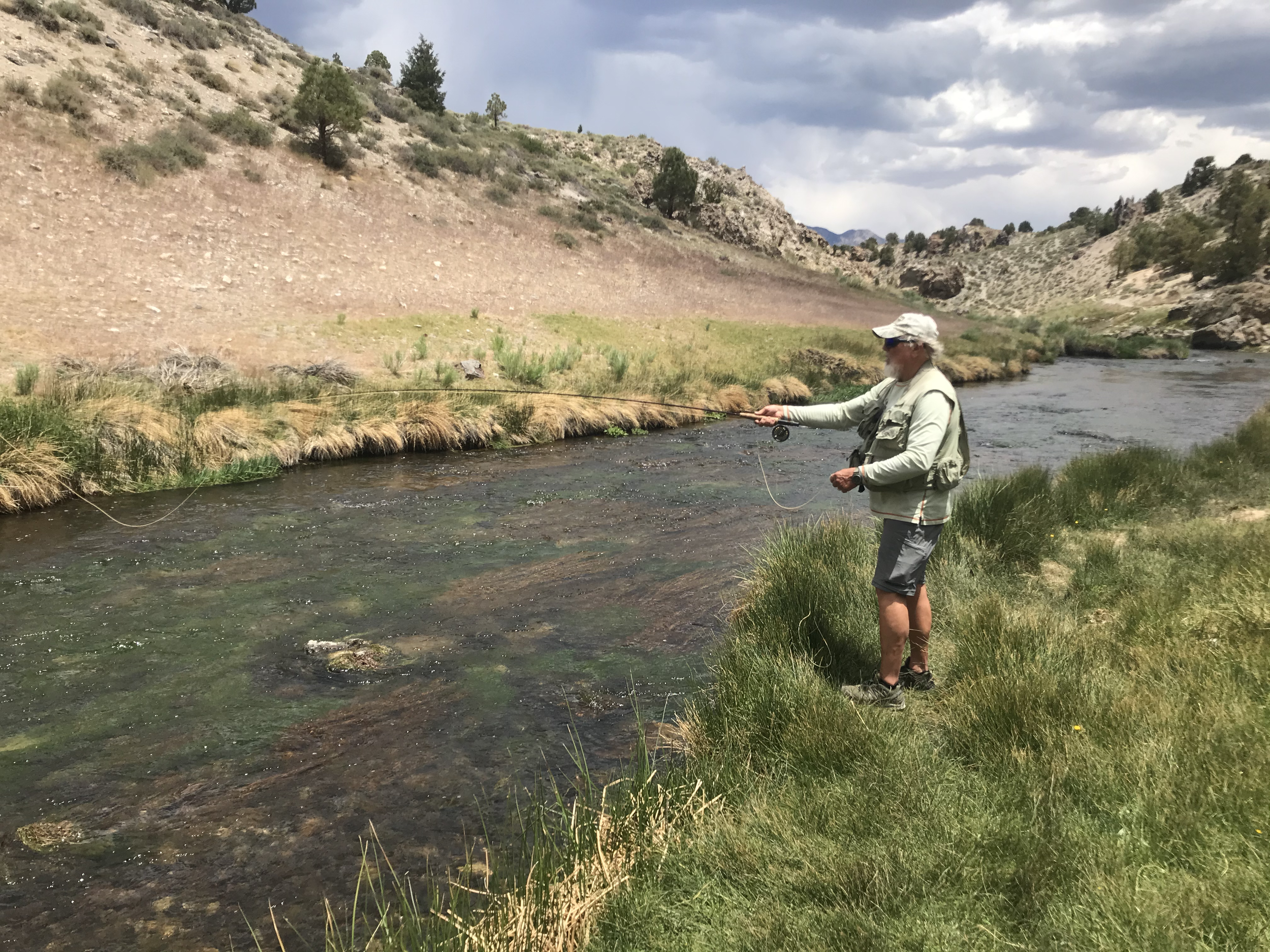Summer is here as the Owens Valley had its first triple digit days getting in to the low 100’s. We’ve had a couple of days of thunder storms at the upper elevations. Rained for five to 20 minutes depending on where in the Eastern Sierra you were. June brings the largest hatches of aquatic insects in the Eastern Sierra. Pale morning duns, blue wing olives, caddis, and little yellow stones are hatching.
Lower Owens River Wild Trout Section:
Flows on the lower Owens River are up to 375 CFS. This is above the safe wading limit for the lower Owens River. It’s time to be fly fishing from the banks if you can find access to the river between the willows and the tulles. Pale morning duns and caddis are providing action for the few fly fishers working the river in the late afternoon and evening. There is very little fly fishing pressure on the lower Owens Right now.
Wading at 275 CFS was the upper limit of safe wading. At 375 CFS it is time to fish from the bank.
Hot Creek:
Interpretive Site:
This is the hardest section of Hot Creek to fish. The water is clear and slow giving the trout plenty of time to find faults in your casts and fly patterns. Mayfly and caddis hatches have the fish feeding on nymphs and adults. Size 16 olive or brown bodied elk hair caddis dead drifted or skittered has been productive. Size 18 bead head flash back pheasant tail nymphs fished on a 24 inch dropper off the bend of a size 16 elk hair caddis is a deadly combination to fish. Also fish size 18 olive or gray sparkle duns, and size 18 X-caddis in olive or gray.
Afternoon thunder storms was the catalyst for some great afternoon caddis hatches on the middles section of Hot Creek Canyon.
The Canyon Section:
Mid-week post-holiday crowds on Hot Creek Canyon were pleasant. Fly fishing pressure will increase over the weekend. Stomach samples from trout revealed caddis adults and mayfly nymphs were on the menu. A drag free drift is required to get the trout to feed on both nymphs and adults. Elk hair caddis in size 16 or 18, and blue wing olive parachutes in sizes 18 are producing wild brown and rainbow trout. Fishing with 5X tippet is working as the fish are not spooky yet.
Upper Owens River:
Above Benton Crossing Bridge:
The cutthroat migration run is coming to an end. There are a few beat up spawners left in the system. June hatches of pale morning duns, little yellow stones, hoppers, and caddis will be feeding the trout. The hoppers are too small to imitate at a size 20 or 22. Nymphing with size 14 or 16 bead head flash back gold ribbed hare’s ears, La Fontaine’s caddis emergers and green/gold wire prince nymphs in the mornings is productive. Mid-day hatches is time to tie on a size 14 or 16 pale morning dun parachute, elk hair caddis, or little yellow stone. Fishing the cut banks with nymphs will produce trophy brown trout.
A dead drifted nymph next to a cut bank can produce trophy browns like this one in the upper Owens River.
Owens River Gorge:
Summer temperatures in the low 100’s, rattle snakes, and stinging nettles are a good reason to leave the Owens River Gorge fly fishing alone until late September.
Bishop Creek Canal Behind the Ford Dealer:
With the lower Owens flows over 300 CFS it’s time to concentrate fly fishing efforts on Bishop Creek Canal. Nymphing the fast water sections with a size 14 bead head flash back gold ribbed hare’s ear, and size 18 bead head flash back pheasant tail nymph five feet under an indicator is producing wild browns to 16 inches. Evening hatches of mayflies and caddis flies have the trout feeding of the surface. Size 16 peacock and grizzly elk hair caddis, size 18 blue wing olive parachutes, and size 16 olive X-caddis are fooling the wild trout in the canal
Nick Gavitte from Napa showing off a typical Bishop Creek Canal brown trout caught while fishing




